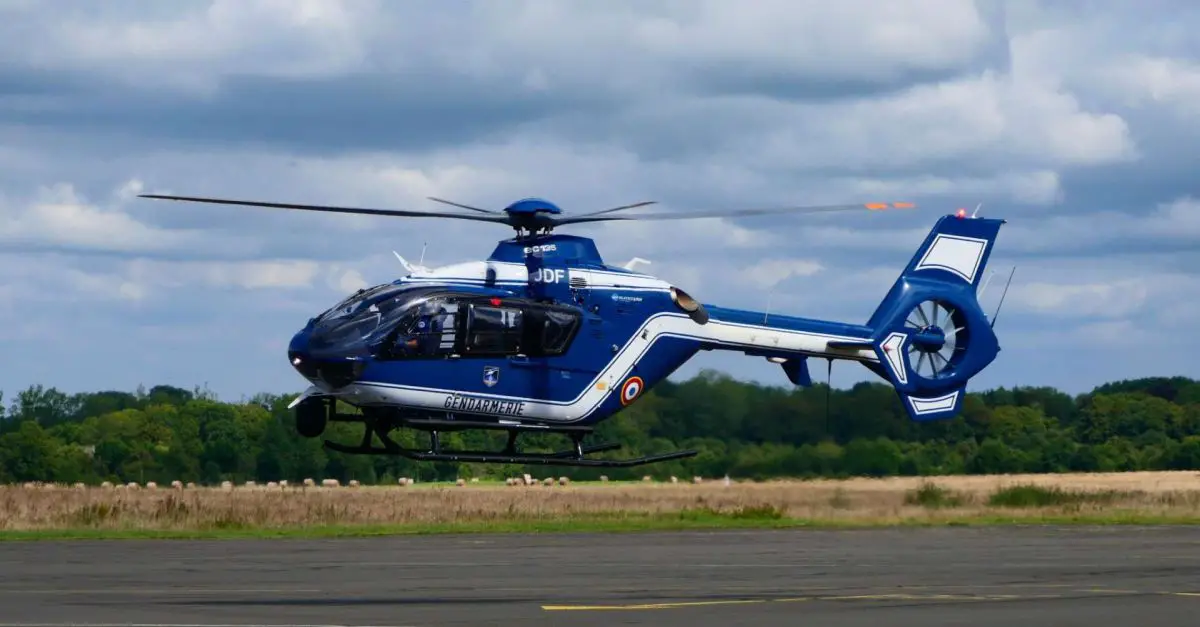Breaking News
France deploys new SéSé helicopter defense system for Paris 2024 Olympics.
During the 2024 Olympic and Paralympic Games, the Système d’écoute du Signalement électronique (SéSé), translated as the Electronic Reporting Listening System, will be used to ensure the safety of the French Gendarmerie's helicopters against drones. Designed by the French Armaments Procurement Agency (DGA), this system will be deployed on ten helicopters to provide aerial surveillance during the event. During the Coubertin exercise, the SéSé demonstrated its capability to detect and prevent drone collisions by identifying their electronic signals to enhance the safety of aerial operations during the Games.
Follow Army Recognition on Google News at this link

The SéSé system demonstrated its effectiveness was demonstrated during the Coubertin LAD II exercise, where it was tested on a gendarmerie EC135 helicopter. (Picture source: Gendarmerie Nationale)
The Système d’écoute du Signalement électronique (SéSé), translated as the Electronic Reporting Listening System, is a collision-avoidance system developed by the French Armaments Procurement Agency (DGA) to improve the safety of helicopter operations due to the increasing presence of civilian drones. Between 2017 and 2021, the number of drones in France increased significantly from 400,000 to 2.5 million, raising the risk of airspace collisions, particularly for low-flying helicopters. This growth prompted stricter regulations, including a mandate for all civilian drones over 250 grams to broadcast their position and a unique identification number via WiFi, serving as a virtual license plate detectable by authorities.
Conceived by engineers at the DGA's Innovation flight test lab, SéSé is designed to detect electronic signals emitted by drones, providing real-time location data to helicopter pilots. The system is cost-effective, using commercially available electronic components to maintain low production costs. It is simple to operate and can be quickly deployed across multiple helicopters, improving situational awareness and reducing the risk of mid-air collisions by alerting pilots to nearby drones.
The development of SéSé followed an incremental approach, beginning with a prototype in 2020 and advancing through ground tests to successful flight trials in 2022. Its effectiveness was demonstrated during the Coubertin LAD II exercise, where it was tested on a gendarmerie EC135 helicopter.

Conceived by engineers at the DGA's Innovation flight test lab, SéSé is designed to detect electronic signals emitted by drones, providing real-time location data to helicopter pilots. (Picture source: DGA)
In 2023, SéSé received an award for innovation in air and space operations at the Forum Innovation Défense. This recognition highlights the system's potential to enhance aviation safety. As part of preparations for the Paris 2024 Olympic and Paralympic Games, the French Ministry of Armies plans to equip ten gendarmerie helicopters with SéSé to ensure aerial security during the event.
SéSé captures WiFi signals broadcast by drones, which include the drone’s position and identification number, providing helicopter pilots with current information on drone activity in their area, enhancing their tactical awareness. The system is easily integrated into existing helicopter fleets, allowing for widespread adoption without significant modifications.
The implementation of SéSé addresses the risks associated with the increasing use of civilian drones. By leveraging existing technologies, the DGA has developed a system that enhances safety and sets a precedent for future developments in drone and aircraft coexistence.
The recognition and planned deployment of SéSé for the 2024 Olympics underscore its significance and effectiveness. The system's rapid deployability and low cost make it suitable for broader applications in various aerial operations beyond the immediate needs of the Olympics. This overview of SéSé highlights its development, technical aspects, operational benefits, and future impact on aerial safety.


























